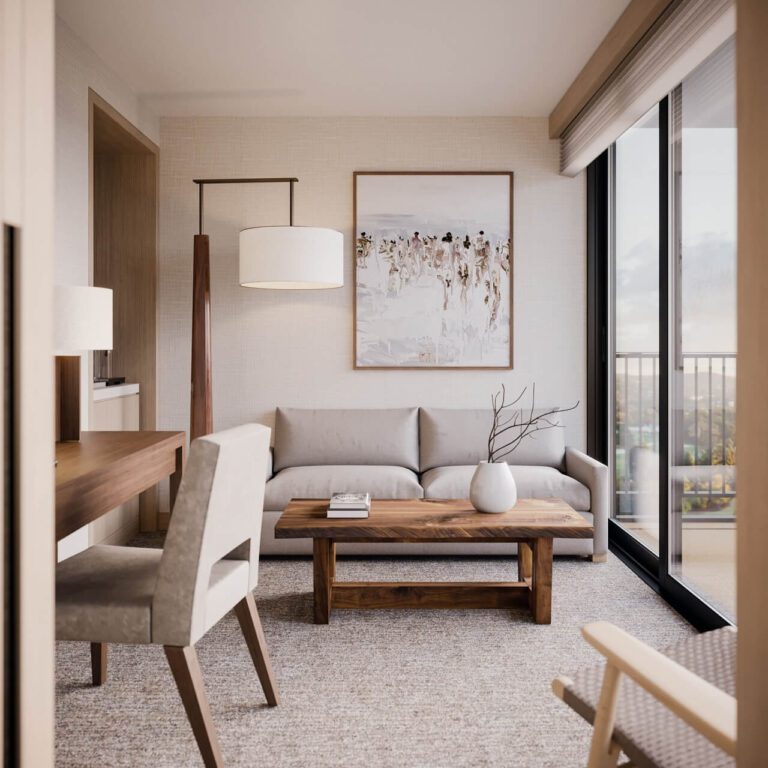Incorporating Japandi design into a small space can be a bit of a challenge. But don’t worry, with a little bit of creativity and some clever design tricks, you can create a beautiful and functional small space that has all the elements of Japandi design.
Japandi design, if you don’t already know, is a wonderfully calming, beautiful mix of Japanese and Scandinavian design. It has a focus on minimalism and neutral tones which are perfect principles for making small spaces feel bigger than they actually are!
We’re going highlight 8 ways to bring Japandi style into your small space and how they will help make the most of space.
Minimalism with Japandi for a Clutter-free Space
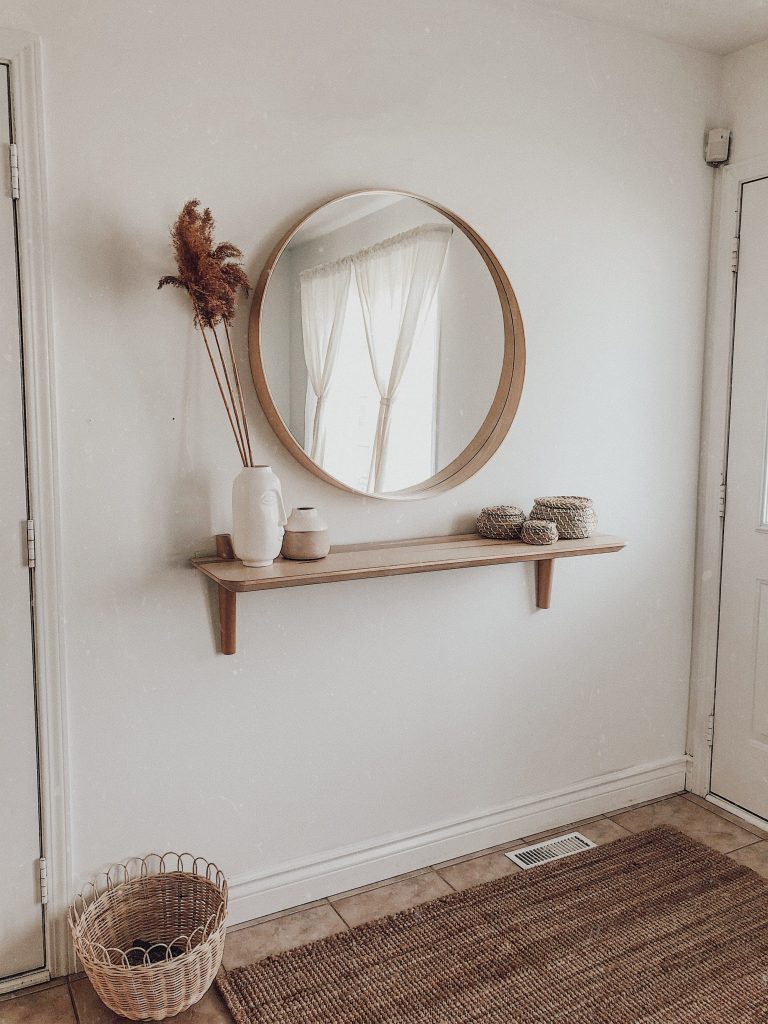
Minimalism is one of the key aspects of Japandi design and it’s all about getting rid of the clutter and focusing on the essentials. But let’s be realistic, when it comes to small spaces, minimalism can feel like an impossible task. I mean, where do you even begin?
First things first, it’s time to declutter. I know, I know, it’s not the most exciting task in the world, but trust me, it’s worth it. Take a good look at the items in your small space, and ask yourself, “Do I really need this?” If the answer is no, then it’s time to say goodbye.
Don’t be afraid to get rid of anything that doesn’t have a purpose or that you don’t truly love. Remember, less is more when it comes to minimalism.
Next, it’s time to focus on the essentials. When it comes to furniture, choose pieces that are functional and that you will actually use. A cosy armchair may look great in your small space, but if you never sit in it, then it’s not serving its purpose.
Lastly, don’t be afraid to have fun with it. Minimalism is all about creating a space that is beautiful, and functional, and promotes well-being. So, don’t be afraid to add your personal touch and make it your own. Remember, minimalism is about finding what truly matters and making it the focus of your space, so you can enjoy your small space to the fullest!
Natural Materials for a Cozy Japandi Small Space

Natural materials are a fundamental aspect of Japandi design, and they can help to bring a sense of nature into your home, especially in small spaces.
Incorporating natural materials such as wood, bamboo, and linen can help to create a sense of warmth and cosiness in a small space.
A great way to incorporate natural materials into a small space is through the use of natural fibres such as linen and cotton. These materials can be used for curtains, bedding, or even as a throw for your armchair. Not only do natural fibres add a touch of warmth and cosiness, but they also add a sense of depth and interest to the space.
Additionally, think about using natural materials creatively, for example, using woven baskets to store things instead of a cabinet. These small touches can make a big difference in creating a cosy and natural environment in a small space.
Serene Japandi Ambiance Using Neutral Colours

Neutral colours are a fundamental aspect of Japandi design, and they can help to create a sense of calm and serenity in a small space.
It’s important to use neutral colours in a way that creates a sense of warmth and cosiness, rather than making the space feel cold and uninviting. One way to achieve this is by incorporating a neutral colour palette but adding a pop of colour through plants or artwork. Feature walls can be great, but are sometimes a bit too much for a small space.
You can use neutral colours to create a sense of continuity in a small space. Using the same neutral tones throughout the space creates a sense of flow and harmony, making the space feel larger.
Clean Lines for a Functional and Balanced Japandi Space
Clean lines and simple shapes are key in Japandi-style decor.
Instead of choosing a bulky and ornate armchair, opt for a sleek and simple design. And don’t be afraid to mix and match different styles, as long as they have clean lines and simple shapes, it will create a sense of flow and harmony in the space.
Another tip is to keep the space organised and uncluttered. This will help to create a sense of calm and tranquillity, making the space feel larger and more functional.
Lighting for a Cozy and Inviting Japandi Space
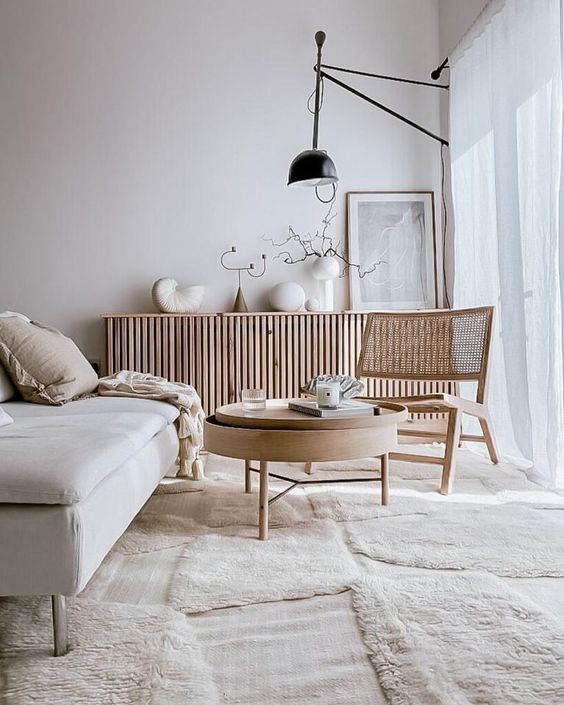
When it comes to lighting in a small space it’s all about getting as much good-quality light in there as possible, ideally naturally. However, we’re not all endowed with big, bright windows letting in lots of light. So, an alternative is to use soft, warm lighting to create a cosy ambience and play to the strengths of your small space.
Instead of using harsh overhead lighting, opt for lamps with warm and low-watt bulbs. This will create a cosy and inviting atmosphere in your small space.
Additionally, you can use lighting creatively to create a sense of depth and interest in a small space. For example, you can use a string of fairy lights or a statement pendant light to add a touch of personality to the space.
Incorporating Nature in Japandi with Plants
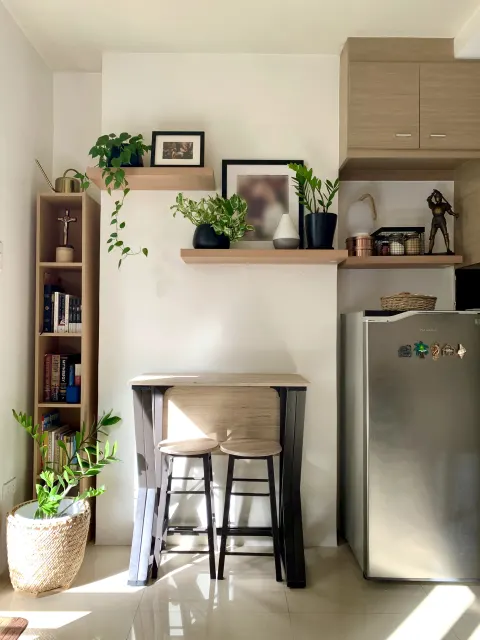
Bringing some green into your small space is a great way to add a touch of nature and create a sense of calm and tranquillity. And what’s a better way to do that than incorporating plants?
In order to avoid re-cluttering your space with plants instead of the things you decluttered earlier, it’s best to really think through the placing of plants. Obviously, they need light so you can make use of window sills if the space has them.
Also, you can use the vertical space with tall shelving units that can hold a few plants. With this in mind, it’s best to go for smaller plants or plants that hang or drape rather than big, statement plants.
With that in mind, a great way to incorporate plants into a small space is by hanging them. Hanging plants not only add a touch of nature, but they also save on floor space, making them perfect for small spaces.
Adding Textures for an Interesting Japandi Space
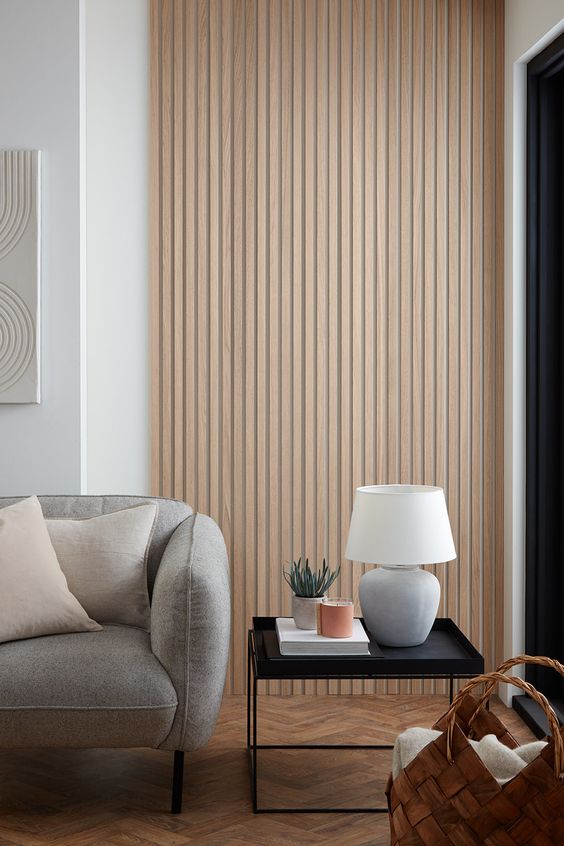
Incorporating different textures is key to creating a sense of depth and interest in your small space.
A great way to incorporate textures in a small space is through the use of fabrics, as we talked about earlier. But in addition, you can use textures creatively on your wall space, for example, using a woven wall hanging or a macrame piece to add a touch of personality to the space.
One of my favourite texture tricks is to add vertical wooden slats to a wall space. The bonus of this in a small space is that it adds the illusion of extra height to the room.
Achieving Balance with Traditional Japanese Elements
When it comes to Japandi design, creating a balance of materials, patterns and textures is so important in making your small space look and feel cohesive.
The key is to choose elements that complement each other. For example, pairing a woven basket with a linen fabric will create a sense of harmony and balance in the space.
Start your whole process with a colour scheme in mind and try not to deviate from this with all the major aspects of your small space, such as walls, floor, furniture, rugs and curtains. If you select pops of colour, keep them small and carefully considered within this colour scheme.
Another great way to create balance in a small Japandi-styled space is by incorporating traditional Japanese elements such as a tatami mat or shoji screen. These elements not only add authenticity to the space but also help to create a sense of balance and harmony.
Incorporating Japandi design into a small space can be a bit of a challenge, but with a little bit of creativity and some clever design tricks, you can create a beautiful and functional small space that has all the elements of Japandi design.
If you’re on a budget, then there are many clever ways to incorporate cheaper elements, such as Ikea furniture and fittings, into your Japandi design.
Remember, the key is to focus on the essentials, choose natural materials that are appropriate for the size of the space, use neutral colours in a way that creates a sense of warmth and cosiness and opt for clean lines and simple shapes in furniture and decor.
And most importantly, have fun with it!

